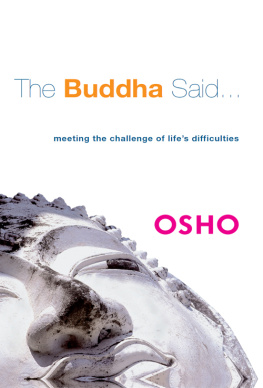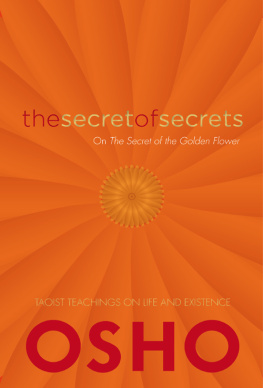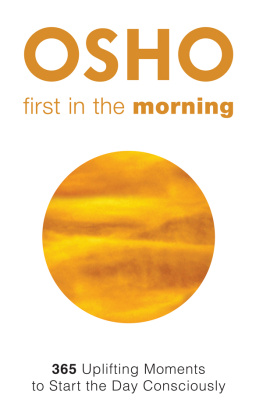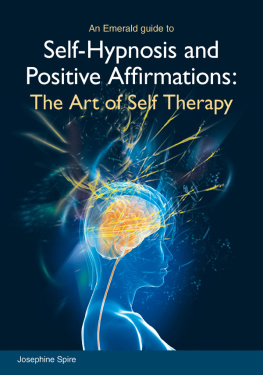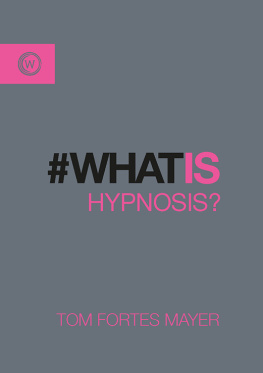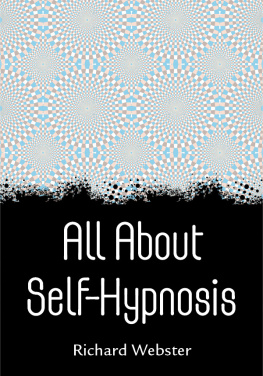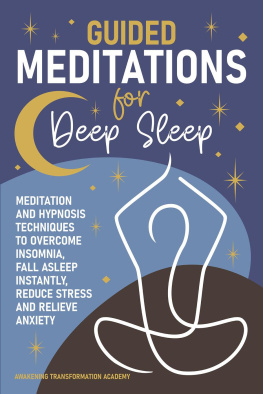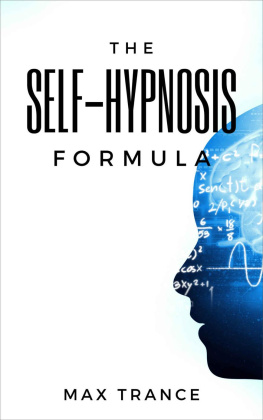Osho - Hypnosis in the Service of Meditation
Here you can read online Osho - Hypnosis in the Service of Meditation full text of the book (entire story) in english for free. Download pdf and epub, get meaning, cover and reviews about this ebook. year: 2012, publisher: Osho International, genre: Religion. Description of the work, (preface) as well as reviews are available. Best literature library LitArk.com created for fans of good reading and offers a wide selection of genres:
Romance novel
Science fiction
Adventure
Detective
Science
History
Home and family
Prose
Art
Politics
Computer
Non-fiction
Religion
Business
Children
Humor
Choose a favorite category and find really read worthwhile books. Enjoy immersion in the world of imagination, feel the emotions of the characters or learn something new for yourself, make an fascinating discovery.

Hypnosis in the Service of Meditation: summary, description and annotation
We offer to read an annotation, description, summary or preface (depends on what the author of the book "Hypnosis in the Service of Meditation" wrote himself). If you haven't found the necessary information about the book — write in the comments, we will try to find it.
Osho: author's other books
Who wrote Hypnosis in the Service of Meditation? Find out the surname, the name of the author of the book and a list of all author's works by series.
Hypnosis in the Service of Meditation — read online for free the complete book (whole text) full work
Below is the text of the book, divided by pages. System saving the place of the last page read, allows you to conveniently read the book "Hypnosis in the Service of Meditation" online for free, without having to search again every time where you left off. Put a bookmark, and you can go to the page where you finished reading at any time.
Font size:
Interval:
Bookmark:
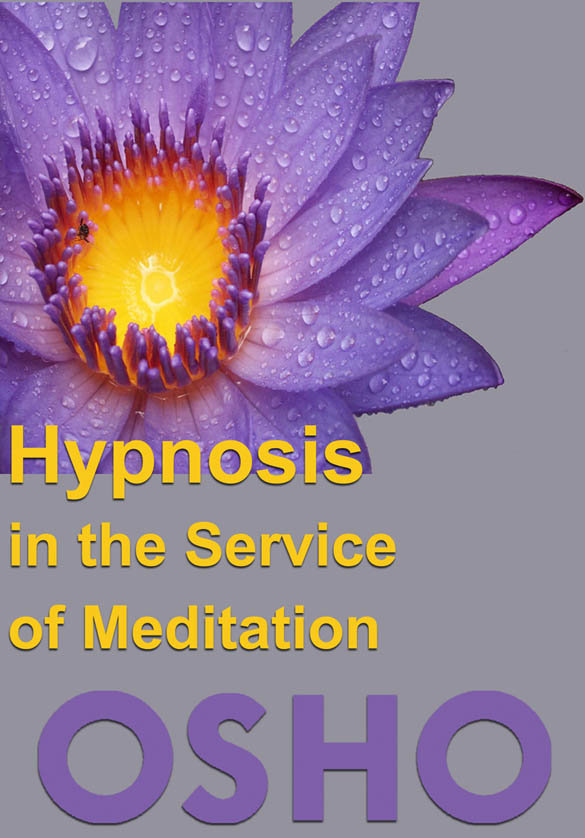
Hypnosis in the Service of Meditation
Osho
Copyright 1987, 2012 OSHOInternational Foundation
www.osho.com/copyrights
Images and Cover Design OSHO International Foundation
Hypnosis in the Serviceof Meditation , by Osho
From a series of OSHO Talkstitled: Satyam Shivam Sundaram, #29
This OSHO Talk is completein itself.
The series Satyam ShivamSundaram is available in book and audio formats.
Hypnosis in the Serviceof Meditation is also available as anoriginal audio recording under the same title, spoken by Osho.
Published by
OSHO MEDIA INTERNATIONAL
an imprint of
OSHO INTERNATIONAL
www.osho.com/oshointernational
ISBN-13: 978-0-88050-021-0
Osho,
While using hypnosis in the service of meditation, I have noticed that the linebetween therapy and meditation is dissolving. As witnessing can become easy andnatural in hypnosis, it seems to provide the ground for a quantum leap intono-mind.
Would you please speak on the transformation of hypnosis into meditation?
It is one of those crimes that Christianity is responsible for.There was a day when hypnosis was a recognized door towards meditation, but in theMiddle Ages Christianity condemned hypnosis alongside witchcraft. Thatcondemnation still lingers on, even in the minds of those who are notChristians but who are influenced without their knowing by Christian ideas.
Why was Christianity against hypnosis? You will be surprised toknow it was against hypnosis because it leads directly to meditation. Neitherthe priest is needed nor the church is needed. Not even God is needed. And thiswas the trouble: if meditation succeeds in the world there are not going to beany religions anymore, for the simple reason that you will be in direct contactwith existence and yourself. Why should you go through brokers and all kinds ofagents who know nothing, except that they are knowledgeable, except that theyhave been disciplined for years in how to influence people and win friends?
It is not something religious that they are doing. What they aredoing is the politics of numbers: gather as many numbers as possible into yourfold; that becomes your strength and your power.
Hypnosis was a danger to the priesthood. And Christianity isabsolutely based from the very beginning on the priesthood. Jesus does notdeclare himself to be enlightened, nor has any other Christian after himdeclared him to be enlightened. He declares something nonsensical: that he isthe only begotten son of God. God is a hypothesis, and hypotheses are notIndians who go on producing children. Hypotheses are barren; they producenothing.
Just the other day I received from Germany There was a Protestantconference of Christians, and they invited our sannyasins, hoping to refute oursannyasins and their ideas. But the whole thing backfired.
There is nobody in the world who can refute my sannyasins becausewe are proposing neither beliefs nor hypotheses. We are simply living life. Ourphilosophy is not something beyond the clouds; it is something rooted in theearth, it is something as scientific as anything can be.
This question had arisen there, and there was great difficultybecause the sannyasins said, Osho is enlightened and Jesus Christ is not. Andthe priests of Protestant Christianity could not produce any evidence thatJesus was enlightened; there is no statement anywhere. All that he wasproclaiming was that he is the only begotten son of God. In fact that is adefinite indication of unenlightenment.
He does not know himself and he is pretending to know God. Andhis prayer is just like our Vimal twenty minutes and the religion isfinished! Then the remaining time you are free to do everything irreligious,and then again for twenty minutes you refresh yourself for yourirreligiousness. The statements that Jesus has made are so ordinary because hewas simply repeating the old prophets.
The sannyasins have informed me that it was a strange situationwhen they confronted the high priests of Protestant Christianity. They lookedat each other: what to do? Enlightenment has not been a Western experience, andthe reason why it could not happen in the West is Christianity.
Christianity never wanted you to be directly connected with God.You have to go via the priest, the pope, the son, and then God. In between, themediators are many, and nobody knows who is lying. Of course you can neverdiscover, because you dont have any direct line with God. The priest has adirect line with the pope, the pope has a direct line with Jesus, Jesus has adirect line with God and the numbers are not given in the telephonedirectories!
Hypnosis was the door, has always been the door to meditation.Once a man enters into the world of meditation, he has such clarity, suchstrength, so much life arising in him that he no longer needs any father inheaven. He no longer needs any priest to pray for him. He himself has becomeprayer not prayer to any God, but simply a prayerfulness, a gratitude to thewhole.
It was absolutely necessary for Christianity to condemn hypnosisand to condemn it as something created by the devil. For the same reasonswitchcraft was brutally destroyed. Millions of women were burned alive becausethey were also doing the same thing. They were trying to contact the ultimateon their own without going through the proper channel of the church.
Your question is very significant. You are asking, While usinghypnosis in the service of meditation Hypnosis in itself can be useddangerously unless it is used in the service of meditation. I will have toexplain to you what exactly is meant by hypnosis and how it can be misused ifit is not used singularly in the service of meditation.
Hypnosis literally means deliberately created sleep. It is nowknown that thirty-three percent, that is one third of humanity, is capable ofgoing into the deepest layers of hypnosis. It is a strange number thirty-three percent strange because only thirty-three percent of people havethe aesthetic sense, only thirty-three percent of people have sensitivity, onlythirty-three percent of people have friendliness, only thirty-three percent ofpeople are creators. And my only experience is that these thirty-three percentof people are the same because creativity and sensitivity aremeditation, are love, are friendliness. All need essentially one thing: a deeptrust in oneself, in existence, and a receptivity and opening of the heart.
Hypnosis can be created in two ways. Because of the first way,people became impressed by the Christian propaganda that it is dangerous. Thisis hetero-hypnosis: somebody else hypnotizes you, a hypnotist hypnotizes you.
There are so many wrong ideas attached, and the most fundamentalis that the hypnotist has the power to hypnotize you. That is absolutely wrong.The hypnotist has the technique, not the power. Nobody can hypnotize youagainst yourself, unless you are willing. Unless you are ready to go into theunknown, untraveled darkness, no hypnotist can manage to hypnotize you.
In fact hypnotists dont deny that they have the power. On thecontrary, they claim that they have the power to hypnotize people. Nobody hasthe power to hypnotize anyone. Only you have the power to hypnotizeyourself or to be hypnotized by somebody else the power is yours. But whenyou are hypnotized by somebody else it can be misused.
The process is very simple, the technique is very simple. Thehypnotist hangs a crystal from a chain just over your eyes, and tells you,Dont close your eyes until you cannot keep them open. Fight to the last! Keepyour eyes open! And the crystal shines in your eyes. Naturally, the eyes haveto blink continuously to keep themselves from getting dry. They are the mostdelicate part of your body. You blink your eyes because your eyelids functionlike windshield wipers on a car. They bring liquid to your eyes and they cleanyour eyes of any dust, or anything that may have entered. They keep your eyesfresh and are always watering.
Font size:
Interval:
Bookmark:
Similar books «Hypnosis in the Service of Meditation»
Look at similar books to Hypnosis in the Service of Meditation. We have selected literature similar in name and meaning in the hope of providing readers with more options to find new, interesting, not yet read works.
Discussion, reviews of the book Hypnosis in the Service of Meditation and just readers' own opinions. Leave your comments, write what you think about the work, its meaning or the main characters. Specify what exactly you liked and what you didn't like, and why you think so.

